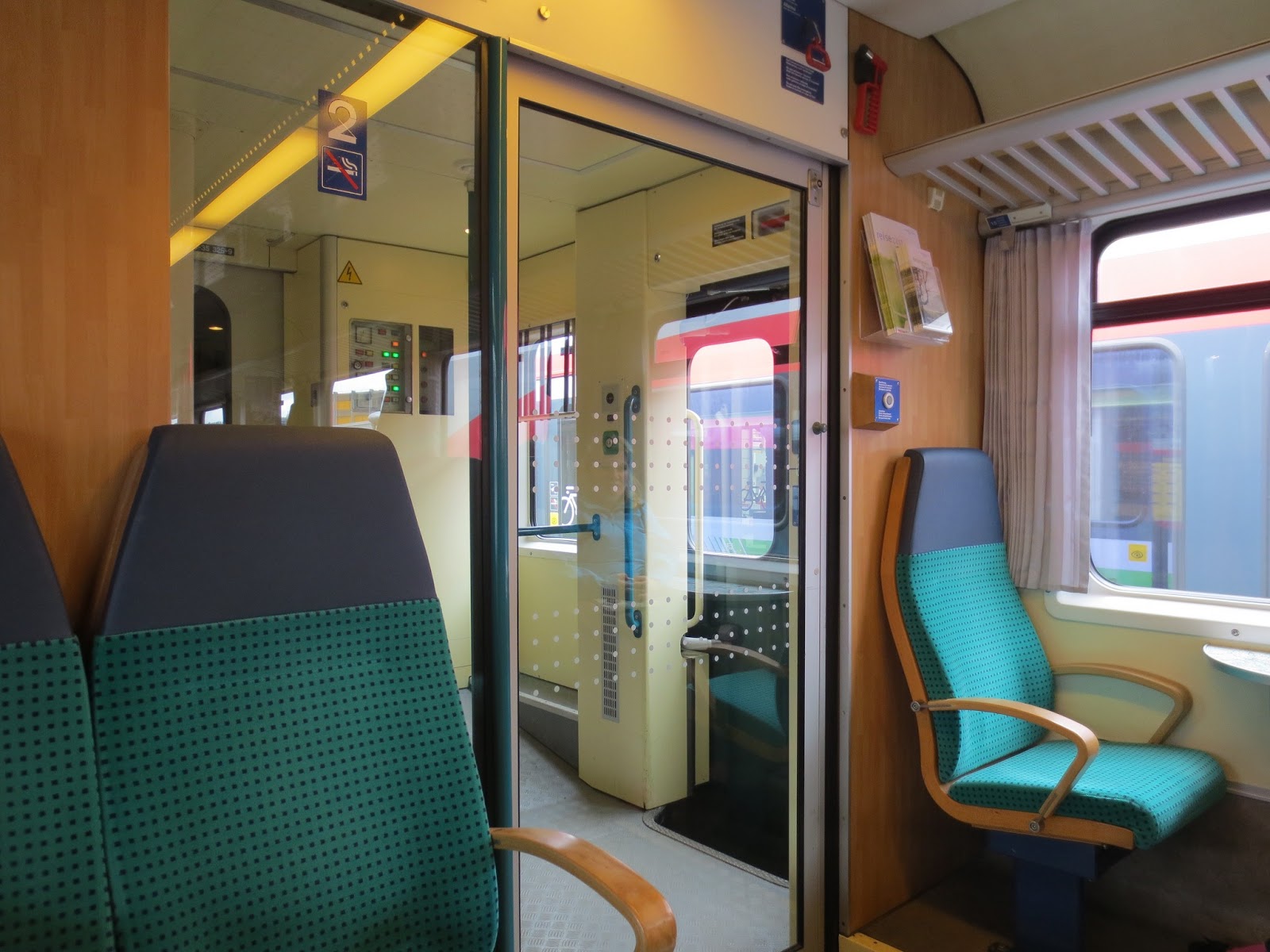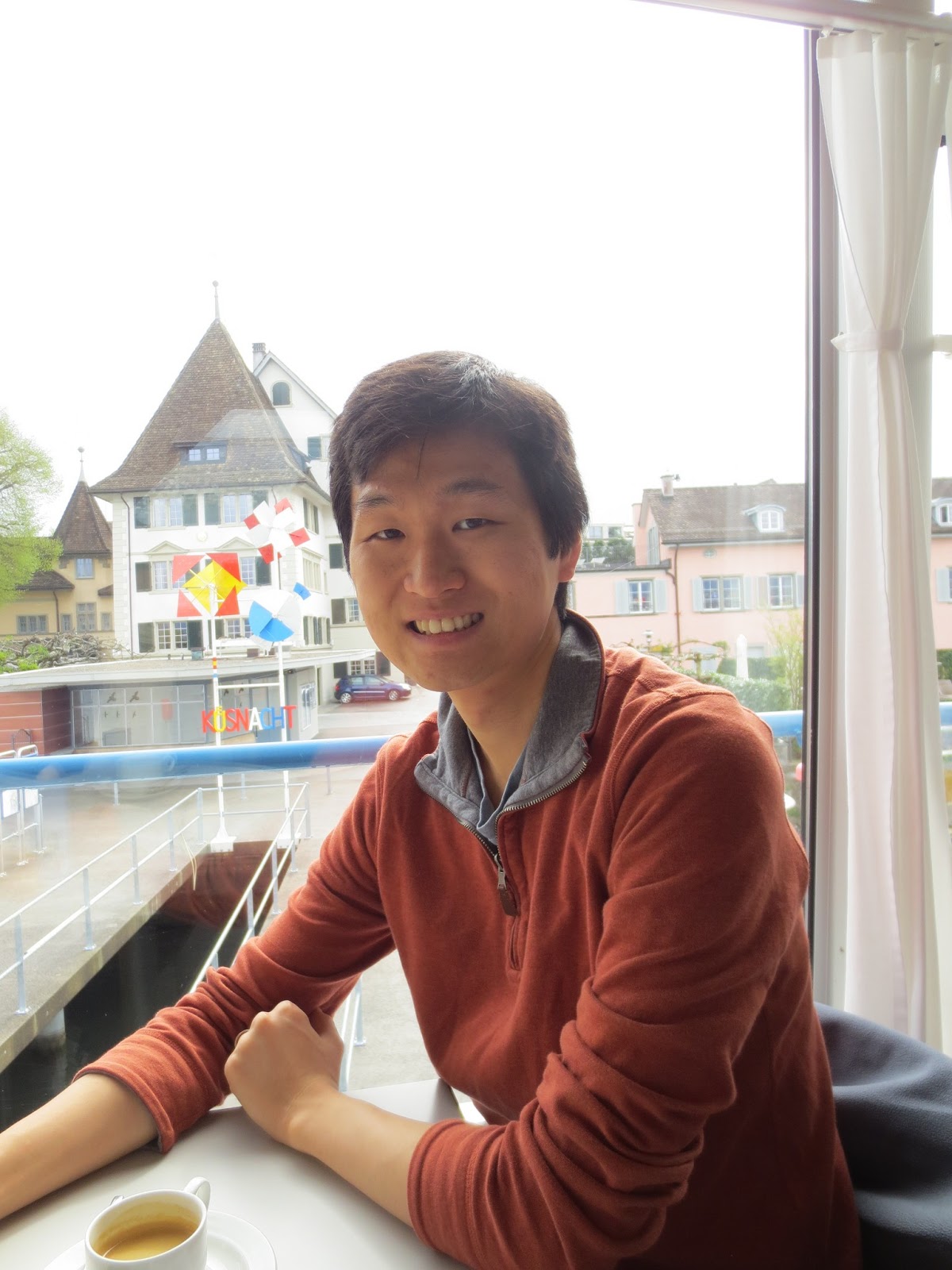Sorry for the delay in posts. Typically, we're good about it, but the Swiss Ms has left for the United States, leaving me all alone in Zurich. Instead of travelling, I've been spending most of my time in lab for the sake of science. However, despite not travelling, we have quite a backlog of expeditions that I need to post for our faithful readers!
In early May, we realized that we had not taken advantage of the large amounts of cheese in the area. Sure, we've bought some cheese at the grocery store, but we wanted to taste the cheese from its source! We decided to go to Appenzellerland and visit the Appenzell Cheese Factory, located in a remote region in Northeast Switzerland. Appenzellerland is actually divided into two half-cantons (Appenzell Innerrhoden and Appenzell Ausserrhoden), and is usually referred to as die beiden Appenzell (the two Appenzells). The reason for this division was religious, with Ausserrhoden being Protestant and Innerrhoden remaining Catholic.
Unlike the other regions we have visited, there were no direct forms of transportation to Appenzellerland. In fact, a one-way trip took us nearly two hours!
We first went south from Thalwil along Lake Zurich to Pfaffikon on the S2. There, we transferred onto a totally new type of train: the Voralpen Express!
Despite the Voralpen journey taking about an hour and a half, it was very scenic and pleasant, so the time seemed to fly by!
We arrived at Herisau, a small town in the canton of Appenzell Ausserrhoden, where we needed to transfer to a bus line that is run by Die Post (The Swiss Postal Service) to the Appenzell Cheese Factory. The Appenzellerland region is not serviced by the the SBB, so Die Post came in to run the public transportation for the area. I think it has to do with the fact that the area has many hills and is very rural.
We had to take a bus from Herisau to Stein AR, Post, another 16 minute journey to get to our destination. After nearly two hours of travel, this cheese factory had better be open.
It was open! We walked inside, and immediately we were assaulted by the smell of cheese fermenting. Very intense. As we wandered around, a nice employee approached us. The conversation went something like this.
Appenzeller Factory Employee: What would you like to do here?
Me: Eat.
(Silence.)
Swiss Ms: Um...I think he wants to go to the restaurant.
Appenzeller Factory Employee: Restaurant is right this way.
I think the Swiss Ms was less than impressed with my monosyllabic answer and attempted to make it more meaningful (Swiss Ms: More like polite). I was hungry. Fortunately, the restaurant was open.
And then, the food!
Fully fed, we moved onto the factory tour and we saw the cheese being made!
We learned that the cheese is seasoned with a brine of secret alpine herbs that gives it a spicy flavor. (The Swiss say spicy, but I think we might call it sharp.) If I'm not mistaken, each one of the wheels of cheese is still individually rubbed with the seasoning. The cows graze on the rolling green meadows to give them the highest quality milk. Such care! No wonder it tastes so good (except the Fett Rass...this is the aged reduced fat cheese).
We made our way to the neighboring museum to witness how cheese making was done before it was all industrialized!
Before we left, we decided to take some of Appenzellerland with us!
Thanks for reading!
-Herr Cervelat
In early May, we realized that we had not taken advantage of the large amounts of cheese in the area. Sure, we've bought some cheese at the grocery store, but we wanted to taste the cheese from its source! We decided to go to Appenzellerland and visit the Appenzell Cheese Factory, located in a remote region in Northeast Switzerland. Appenzellerland is actually divided into two half-cantons (Appenzell Innerrhoden and Appenzell Ausserrhoden), and is usually referred to as die beiden Appenzell (the two Appenzells). The reason for this division was religious, with Ausserrhoden being Protestant and Innerrhoden remaining Catholic.
 |
| The coat of arms for Appenzellerland. (Children should avert their eyes...) |
 |
| A one-way trip planned by the good people at the Thalwil train station. They even gave us a print-out to help us out! So courteous! |
We first went south from Thalwil along Lake Zurich to Pfaffikon on the S2. There, we transferred onto a totally new type of train: the Voralpen Express!
 |
| There it is!!! A new train! |
 |
| It feels like I'm riding in a chalet with big windows and real wood paneling. The train also made melodious sounds to inform passengers when it was about to arrive at a new stop. |
 |
| The red line indicates the route of the Voralpen express. It goes from Lucerne to Romanshorn (without going through Zurich HB), passing St. Gallen on the way! |
 |
| Beautiful rolling hills. |
 |
| Cows cows cows. |
 |
| Thank goodness for Die Post! Without it, we would have some trouble getting to the factory! |
 |
| We're finally here. S2 => Voralpen Express => Post Bus |
 |
| The long journey has made her hungry! |
Appenzeller Factory Employee: What would you like to do here?
Me: Eat.
(Silence.)
Swiss Ms: Um...I think he wants to go to the restaurant.
Appenzeller Factory Employee: Restaurant is right this way.
I think the Swiss Ms was less than impressed with my monosyllabic answer and attempted to make it more meaningful (Swiss Ms: More like polite). I was hungry. Fortunately, the restaurant was open.
 |
| The restaurant features cheese made right in the factory. |
 |
| Cozy interior feels like I'm inside a mountain chalet. |
 |
| The Original Appenzeller Toast: ham and pears on toasted bread, topped with melted Raclette (another Swiss cheese) and Appenzeller cheese (I think it was the Surchoix). |
 |
| Where the cheese making magic happens! |
 |
| So. Much. Milk. |
 |
| Preparing to make the cheese. |
 |
| So. Much. Cheese. |
We made our way to the neighboring museum to witness how cheese making was done before it was all industrialized!
 |
| The man uses cheese cloth to pick up the curd (two hands and his mouth make a triangular net) to pick it up! |
 |
| Look at all that curd! |
 |
| Close up of the curd! No gloves. |
 |
| The curd is lightly pressed to remove excess whey. |
 |
| The curd is sectioned off to nine pieces and placed into a mold. The cheese is pressed and turned over several times a day. The following day, the cheese is put in a salt bath for conservation. Then, it is stored in a cheese cellar and brushed with seasoning until ripened to perfection! |
Before we left, we decided to take some of Appenzellerland with us!
 |
| Yum! Our favorite cheese from our lunch cheese platter. |
Thanks for reading!
-Herr Cervelat





































